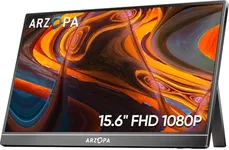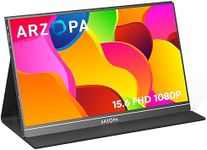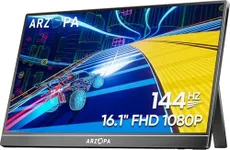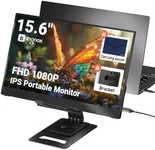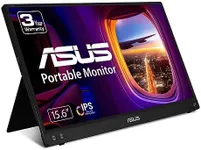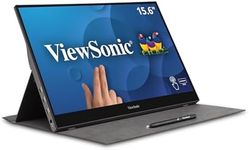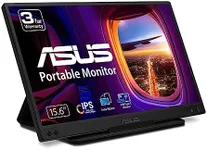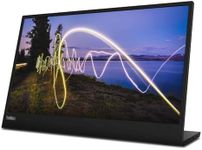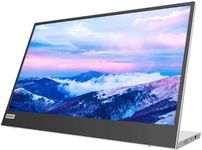Buying Guide for the Best Portable Monitor
Choosing a portable monitor can really enhance your productivity or entertainment on the go, whether you need a second screen for your laptop, a bigger display for your phone, or a portable solution for gaming. The key is to think about how and where you’ll use it most—do you need something super light for travel, a screen with great color for creative work, or just a simple display for presentations? Understanding your main use case will help you focus on the features that matter most to you.Screen SizeScreen size refers to the diagonal measurement of the display, usually in inches. This is important because it affects both portability and usability. Smaller screens (around 13 inches or less) are easier to carry and fit in most bags, making them ideal for frequent travelers. Medium sizes (14-15 inches) offer a balance between portability and comfortable viewing, suitable for most users. Larger screens (16 inches and above) provide more workspace and are better for tasks like editing or gaming, but they can be bulkier to transport. Think about how much space you need for your tasks and how much weight you’re willing to carry.
ResolutionResolution is the number of pixels on the screen, which determines how sharp and clear the image looks. Common resolutions include 1080p (Full HD), 1440p (QHD), and 4K (Ultra HD). Full HD is usually enough for general work, web browsing, and streaming. QHD and 4K offer sharper images and are better for photo editing, design, or if you want a more detailed display. Higher resolutions can also make text and images look smaller, so consider your eyesight and how close you’ll sit to the screen.
Panel TypePanel type affects color accuracy, viewing angles, and response time. The most common types are IPS, TN, and OLED. IPS panels offer good color and wide viewing angles, making them great for most uses. TN panels are usually cheaper and have faster response times, but colors and angles aren’t as good. OLED panels have the best colors and contrast, but can be more expensive and less common. If you care about color quality for creative work, go for IPS or OLED. For basic tasks, TN might be enough.
ConnectivityConnectivity refers to the ports and ways you can connect the monitor to your devices. Common options include USB-C, HDMI, and sometimes mini DisplayPort. USB-C is popular because it can carry both video and power with one cable, making setup simple and tidy. HDMI is widely compatible with many devices but usually needs a separate power source. If you want the easiest setup, look for USB-C with power delivery. If you need to connect to older devices, make sure the monitor has HDMI or other needed ports.
Weight and ThicknessWeight and thickness determine how easy the monitor is to carry around. Lighter and thinner monitors are better for travel and frequent movement, while heavier ones might be more stable but less portable. If you plan to carry the monitor in a backpack or briefcase, check the weight and thickness to make sure it fits your needs and won’t be a burden.
Power SourcePortable monitors can be powered by your device (like a laptop or phone) through USB-C, or they may need their own power supply. Monitors that draw power from your device are more convenient and reduce cable clutter, but they may drain your device’s battery faster. Some monitors have built-in batteries, which can be useful if you want to use them with devices that can’t provide power. Consider how you’ll use the monitor and whether you need it to be fully independent from wall outlets.
Touchscreen CapabilitySome portable monitors offer touchscreen functionality, which can be useful for drawing, note-taking, or interacting with certain apps. If you plan to use the monitor for creative work or presentations, a touchscreen might be a valuable feature. If you just need a second display for basic tasks, you can skip this feature.
BrightnessBrightness is measured in nits and affects how well you can see the screen in different lighting conditions. Lower brightness (under 250 nits) is fine for indoor use, while higher brightness (300 nits or more) is better if you’ll use the monitor in bright rooms or outdoors. If you often work in various environments, look for a monitor with higher brightness.
